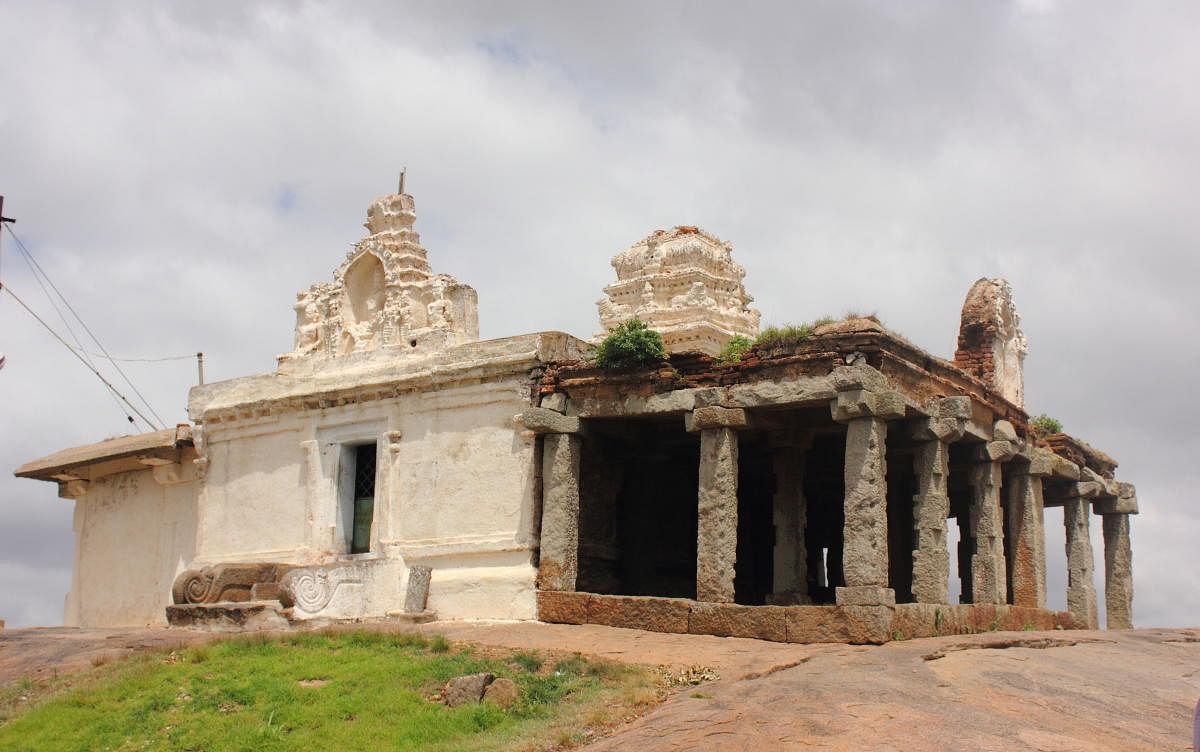Exploring the bylanes of history







Every Monday morning for the past two years, Dharmendra Kumar Arenahalli has unfailingly uploaded a video on YouTube and Facebook. The premise of these videos are simple: Arenahalli visits a new location and explains its historical significance in a breathless rush of excitement that sweeps you along.
In one video, Arenahalli speaks about the first water filtration plant built in Bengaluru in 1897 and its connection to Dewan K Seshadri Iyer, before revealing that he is actually present at the Bangalore Water Supply and Sewerage Board office in Malleshwaram. In another, he is touring the Ranganatha Swamy Temple in Davanagere’s Nirthadi village, the site of a skirmish between the Mughal army and the forces of Chitradurga; this Vishnu temple is unique as it has images of Shiva engraved on the pillars. Yet another video shows him trekking on a nondescript hillock that is revealed to be one of the ‘Nava durgas’ (nine fort hills) around Bengaluru, constructed by Kempegowda.
Arenahalli’s videos have earned him a steady following on social media and his work is part of a larger online trend of history and culture moving out of the straitjacket of academic books and onto popular mediums.
Tejas R S, a wildlife conservationist and history enthusiast who is inspired by Arenahalli’s dictum that “every lane has a history and story to tell”, says that this focus on the interesting, smaller details of history can help build enthusiasm for conserving heritage places in the state.
As an example, he points to the story behind the name of Jayanagar T Block. In messaging boards online, some say the ‘T’ stands for “Tilaknagar” while others argue that it stands for “Tavarekere” but Arenahalli points to the existence of a village called Tayapannahalli, whose residents protested against their village being subsumed into the newly-planned locality of Jayanagar. The T is all that remains of this village now, obscuring more than it reveals.
Pitfalls of classical history
“The big problem with classical history is that it is ‘king centric’ and ‘war centric’. It ignores the common people. But when you talk about a kingdom, there are various people who would have participated in its development,” says Rahamat Tarikere, a Professor at the Kannada University in Hampi.
“The other affliction of mainstream history is that it is always finding communal angles, which is corrupting the discourse. In that sense, Arenahalli is escaping the communal discourse some academicians are stuck in,” Tarikere says.
There are also other parallel efforts in the state to decentralise the study of history and popularise it. Since 1986, the Karnataka Itihasa Academy, founded by Professor G S Dixit and Dr Suryanath U Kamat, has been silently working to promote awareness about the state’s history and heritage among the common public by holding seminars, workshops and other activities.
Grassroots efforts
Dr Devarakonda Reddy, the academy’s current president, says its aim has always been to expand the scope of historical research and study from the confines of academia.
The academy has 2,100 strong voluntary members, which includes bus drivers, farmers, retired bank officers and high school teachers from various remote, rural areas of Karnataka. One of its recent achievements has been to map and create an online database — entirely with the help of volunteers — of the various temples, inscriptions, veeragallus (hero stones), sculptures and even manuscripts in the state.
Dr Reddy says one of the best features of the academy is a lack of hierarchy, with members only united by their love of the subject. “Everyone is given an opportunity to grow. No one is discouraged,” he says.
Ninganagouda H Desai, a high school teacher in Yadgir’s Surapura taluk, is a member of the Itihasa Academy. Over the past decade, he has been conducting research in the regions around his village, presenting papers at the academy’s annual conference, in addition to creating awareness about saving the heritage of the region.
Desai has an MA in History and was first drawn to the study of history when he accompanied his teacher on fieldwork. So far, he has unearthed several sculptures and veeragallus in the region, especially from temples dating back to the 11th and 12th century.
His efforts to inculcate awareness in his students also paid off. “Once, my students from the school called me saying ‘We have found a stone near our village,” he says.
Danger of misinformation
But are there any dangers to this grounds-up approach to history and culture? Arenahalli refers to primary sources like the Epigraphia Carnatica and Gazetteer of Mysuru before making his videos; the members of the academy have trained historians and academicians to guide them. Yet, most social media platforms are awash with outlandish, downright fictitious reiterations of India’s ‘glorious past’.
“There are videos made by people with inadequate knowledge in history, which say some truly outrageous things, that the Vittala Temple in Hampi is a model of a rocket, or that a stepwell is an entry into a parallel universe and so on. And these videos have hundreds of thousands, sometimes even millions of views. So the scale of misinformation is both staggering and scary,” says Meera Iyer, the convener for the Indian National Trust for Art and Heritage, Bengaluru.
“I fear there is also some mythmaking, eulogising certain parts of the past. With the caveat that this is not about one particular person, all these are unfortunate, real dangers,” she adds.